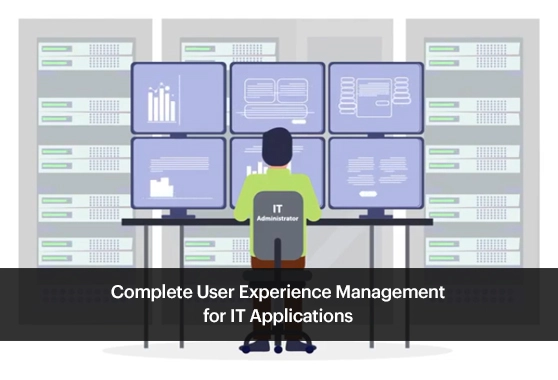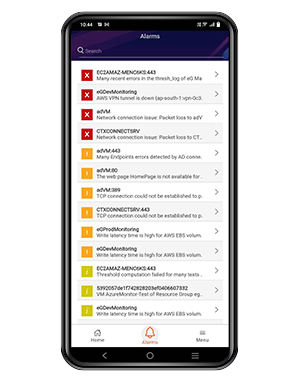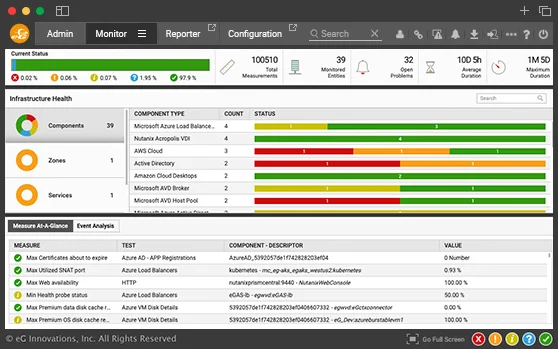HP-UX Monitoring with
eG Enterpise
Drive top HP-UX performance and IT efficiency with comprehensive HP-UX monitoring. Track all key HPUX KPIs including CPU, memory, network, disks, monitor processes and log files. Use the same agent for monitoring applications in-depth.
Free TrialHP-UX Server Monitoring for Top User Experience
The HP-UX operating system is widely used by many enterprises to power critical applications in their data centers. Applications ranging from infrastructure services to databases and web servers
to critical applications like SAP and CRM systems are hosted on HP-UX servers. Performance monitoring of the HP-UX servers and the applications they host is critical for ensuring that the business operates effectively. Slowdowns can result in frustrated users, loss of productivity and increased support costs for the enterprise.

Why Monitor Every Aspect of
HP-UX Server Performance?
When an HP-UX server slows down, administrators have to determine what is causing the slowdown: could it be because of a hardware problem? Or could it be because of a malfunctioning application running on the server? Or could it be because the server is not sized correctly to handle the workload that it is seeing? If there is a bottleneck on the server, which resource is the bottleneck – is it CPU, or memory, or disk, or network?
To be able to effectively monitor HP-UX servers, administrators need access to metrics from every layer of the server. They should be able to compare performance across these layers to diagnose exactly where the performance bottleneck lies. While server monitoring is important, administrators also need to be able to look in-depth into application performance.
With eG Enterprise, we can now quickly identify root causes of incidents, resolving them before users are impacted. Automatic prioritization and categorization of alerts helps us better focus on the important issues and prioritize our resources accordingly.![]()
Comprehensive Monitoring of HP-UX Server and Application Performance with
eG Enterprise
eG Enterprise is a 100% web-based performance monitoring solution for HP-UX infrastructures. eG Enterprise provides a single console from which administrators can track the status of their HP-UX server farms, receive alerts when problems happen, view reports on historical performance, and plan the capacity of their server farms.
To monitor a HP-UX server, eG Universal Agent can be deployed on the server in a matter of minutes with very little configuration required. Agentless monitoring is also supported. Administrators can choose the servers to be monitored with agents (e.g., critical production servers) and those that can be monitored in an agentless manner (e.g., staging servers).
| Key features: | |
|---|---|
Unified Monitoring Offers Total Performance Management Flexibility
To monitor server hardware, eG Enterprise relies on native HP-UX commands, and integration with HP Insight is also supported. Monitoring of the server operating system is based on native commands and scripts. Every aspect of operating system performance – including the usage of key CPU, memory, disk and network resources are tracked, plus system logs.
The same agent that monitors the HP-UX operating system can also be used to monitor applications running on the server. Popular applications like the IBM WebSphere web server, Oracle WebLogic Java application server, Apache web servers, etc., can be monitored. Other applications hosted on HP-UX such as Sybase database servers, Tomcat or JBoss application servers, enterprise applications like SAP and others can also be monitored using eG Enterprise. For a complete list supported platforms, see "All Technologies."

Integrated Monitoring of
HP-UX and Windows Servers
eG Enterprise uses a unique layer model representation to depict the performance of different layers of an HP-UX server (e.g., hardware, operating system, network, TCP/IP, application processes, etc.). A similar layer model representation is also used for other operating systems that eG Enterprise supports. This way, eG Enterprise provides a single pane of glass from where administrators can monitor multi-vendor data center servers from a single console and with a unified representation model. This greatly simplifies the monitoring and management of heterogeneous server farms.
Alerting and Reporting on
HP-UX Performance
Baselines for all the key metrics are pre-defined in eG Enterprise based on industry standard best practices. eG Enterprise can also determine automatic thresholds for other metrics based on an analysis of past history. The actual metrics are compared with the thresholds to determine where the problems lie in the infrastructure.
With eG Enterprise in place, AIX administrators can start receiving alerts when a key process fails, a critical event is logged in the server log, or when a disk fills up.
eG Enterprise also provides extensive web-based reporting of all the collected metrics. Admins can receive periodic, detailed reports of the performance of their server farm without even logging into the console.













